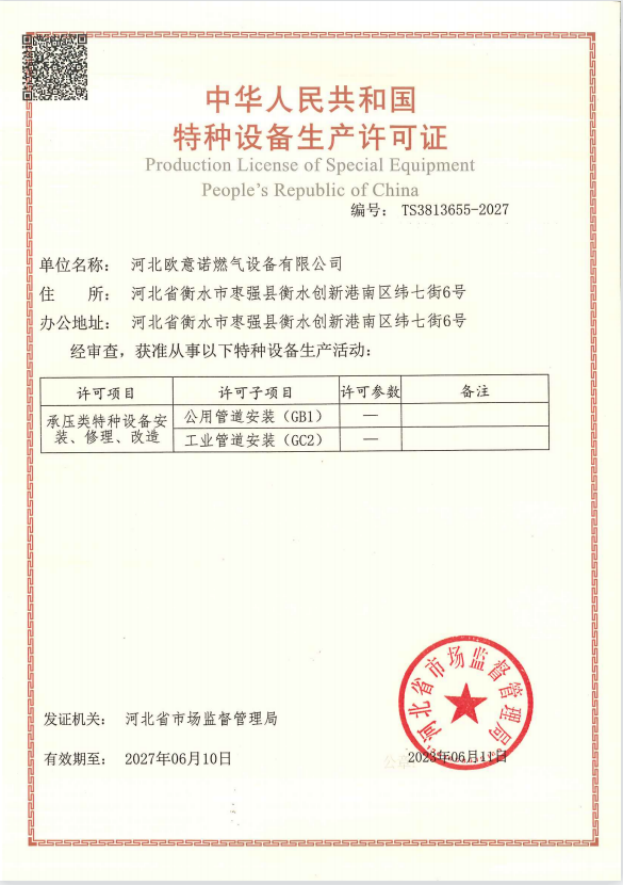
Nov . 20, 2024 08:23
Back to list
pressure regulating device
Understanding Pressure Regulating Devices Essential Components in Fluid Systems
Pressure regulating devices are pivotal components in various industrial applications where maintaining specific pressure levels is crucial for safety and operational efficiency. These devices ensure that the pressure of fluids—whether gases or liquids—remains within predetermined limits, thereby preventing potential harm or inefficiencies. This article delves into the mechanisms, types, and applications of pressure regulating devices, highlighting their significance in modern engineering.
At the core of a pressure regulating device is its ability to maintain a nearly constant output pressure despite variations in input pressure and flow rates. This functionality is critical in many systems, such as gas distribution networks, water supply systems, and even in HVAC applications. The basic working principle involves a sensing element that detects the output pressure and a control mechanism that adjusts the flow of the medium either by throttling or by diverting flow to maintain the desired set pressure.
There are several types of pressure regulators, each suited for different applications. The most common type is the spring-loaded pressure regulator, where a spring applies a force against a diaphragm that responds to changes in pressure. When the output pressure exceeds a certain level, the diaphragm moves, allowing the regulator to close off the flow, thereby reducing the pressure. This type of regulator is praised for its simplicity and reliability.
Another notable type is the electronic pressure regulator, which utilizes electrical sensors and actuators. These regulators provide greater precision and can adjust pressure levels more dynamically through control systems. Their ability to integrate with modern automation technologies makes them ideal for applications where precise pressure control is essential, such as in semiconductor manufacturing and pharmaceutical processes.
pressure regulating device

Additionally, back-pressure regulators are specifically designed to maintain pressure on the upstream side of a system, providing a mechanism to control the pressure and flow characteristics of a system effectively. These devices are particularly useful in applications involving process control, where maintaining a specific pressure upstream of a delivery point is vital.
The applications of pressure regulating devices are extensive and diverse. In the gas industry, they are crucial for regulating the pressure of natural gas before it reaches consumers. A uniform pressure ensures that gas appliances operate efficiently and safely. Similarly, in water distribution systems, pressure regulators help manage supply pressure to prevent damage from excessive pressure scenarios and allow for effective distribution across various terrains.
In the medical field, pressure regulators play a life-saving role, particularly in oxygen delivery systems. These devices ensure that patients receive oxygen at the correct pressure, which is vital for patient safety and therapeutic efficacy. Hospitals utilize various types of pressure regulators in medical gas systems to maintain appropriate flow rates and pressures for different treatments.
The importance of pressure regulating devices extends beyond industrial use; they are also integral to the automotive sector. Fuel pressure regulators, for instance, maintain a consistent fuel pressure within the fuel injection system, ensuring optimal engine performance and efficiency.
In conclusion, pressure regulating devices serve as the unsung heroes of fluid dynamics. Their presence is felt across myriad industries, providing essential safety, efficiency, and precision. As technology advances, the evolution of pressure regulating devices continues, with innovations paving the way for even more reliable, efficient, and intelligent pressure management solutions. In a world where fluid systems are foundational to many technologies, understanding and harnessing the capabilities of pressure regulating devices is more important than ever.
Next:
Latest news
-
Safety Valve Spring-Loaded Design Overpressure ProtectionNewsJul.25,2025
-
Precision Voltage Regulator AC5 Accuracy Grade PerformanceNewsJul.25,2025
-
Natural Gas Pressure Regulating Skid Industrial Pipeline ApplicationsNewsJul.25,2025
-
Natural Gas Filter Stainless Steel Mesh Element DesignNewsJul.25,2025
-
Gas Pressure Regulator Valve Direct-Acting Spring-Loaded DesignNewsJul.25,2025
-
Decompression Equipment Multi-Stage Heat Exchange System DesignNewsJul.25,2025

